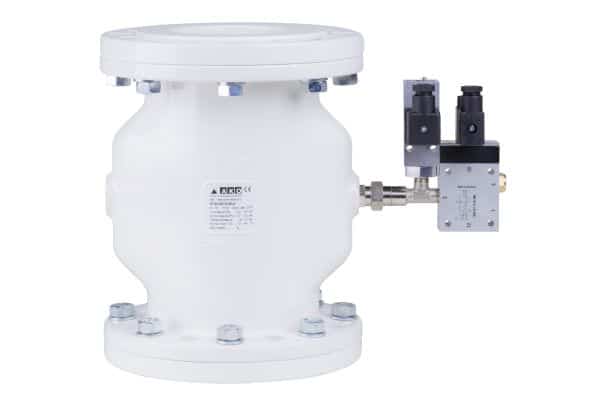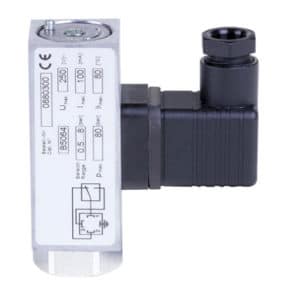A pressure switch used as an accessory for a Pinch Valve determines if the valve is open or closed.
Pressure Switches for Pinch Valves
How it Works
Pressure switches are usually mounted between a solenoid valve and the Pinch Valve inlet. The Pinch Valve requires 2.5 BAR pressure above the line pressure to close. If a user has an application with 3 BAR line pressure for example, then 5.5 BAR is required to shutoff the Pinch Valve. To be sure, some users may operate with 6 BAR to close the Pinch Valve fully. The pressure switch is is set to 5.5 BAR. The constant supply of air at 5.5 BAR travels into the Pinch Valve to close it off, and when the Pinch Valve is fully closed the air shoots back up into the pressure switch at 5.5 BAR to trigger it and send a signal. Effectively, this tells the user that the Pinch Valve is closed.
If the switch does not send a signal, this is because the air is not reaching the pressure switch at 5.5 BAR. This tells the user that there is a problem.

To Summarise
The pressure switch works with ‘back pressure’. Air closes the Pinch Valve and the pressure backs up and hits the switch to trigger it. If there is a sleeve failure such as a split or crack, the back pressure will not reach the switch at the required set pressure, and therefore indicates there being a problem and that the Pinch Valve is not closed.
See more Accessories for Pinch Valves.



